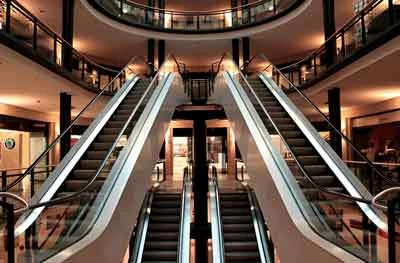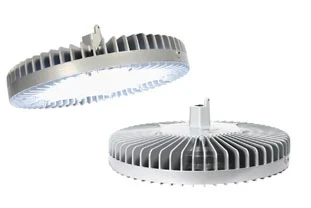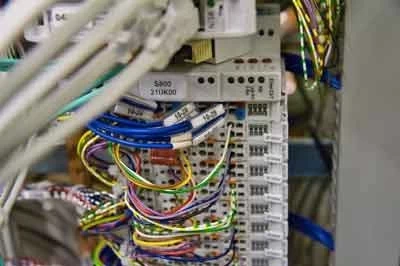Optimizing Energy Consumption for a Sustainable Future

In today's world, where energy costs are on the rise and environmental concerns are paramount, building automation systems (BAS) are emerging as a powerful tool for achieving significant energy savings and fostering a more sustainable future. These intelligent systems act as the central nervous system of a building, seamlessly coordinating various subsystems like lighting, HVAC (Heating, Ventilation, and Air Conditioning), and security to optimize energy consumption and create a comfortable, efficient building environment.
Visit Our Building Automation Study Course
This article delves into the heart of building automation, exploring how it tackles the challenge of energy efficiency through a range of features and applications:
The Power of Smart Lighting: Traditional lighting systems often waste energy by illuminating unoccupied spaces. BAS integrate with occupancy sensors, which detect human presence and automatically adjust lighting levels. This not only reduces energy consumption but also extends lamp life, leading to further cost savings. Additionally, BAS can be programmed to utilize natural daylight whenever possible by dimming electric lights or raising window blinds, further optimizing energy use.
Precision in HVAC Control: Heating and ventilation systems are major contributors to a building's energy footprint. Building automation systems offer sophisticated temperature control features that ensure occupant comfort while minimizing energy waste. Programmable thermostats can be set to adjust temperatures automatically based on occupancy schedules and external weather conditions. BAS can also integrate with demand response programs, allowing buildings to strategically reduce energy consumption during peak demand periods on the grid, earning financial incentives from utility providers.
Optimizing Ventilation Strategies: BAS can optimize ventilation strategies based on real-time occupancy data and CO2 (carbon dioxide) levels. By utilizing sensors to monitor CO2 concentration, a key indicator of occupant presence, BAS can adjust ventilation rates to ensure adequate air quality without unnecessary energy consumption. This approach not only saves energy but also maintains a healthy and comfortable environment for building occupants.
Harnessing the Power of Data Analytics: Modern BAS are equipped with powerful data analytics capabilities. These systems collect and analyze data from various sensors throughout the building, providing valuable insights into energy consumption patterns and identifying opportunities for further optimization. Facility managers can leverage this data to identify areas of high energy use, prioritize improvements, and track the effectiveness of implemented energy-saving strategies.
Beyond Efficiency: Additional Benefits of Building Automation
Building automation offers a multitude of benefits beyond just energy efficiency, creating a compelling case for investment:
Enhanced Comfort and Productivity: BAS can personalize temperature, lighting, and air quality settings based on occupancy and preferences. This not only leads to increased occupant comfort but also has the potential to boost productivity by creating a more pleasant and stimulating work environment.
Improved Building Operations and Maintenance: BAS can automate routine tasks like equipment monitoring and diagnostics, enabling proactive maintenance and faster response times to potential issues. This translates to reduced downtime, extended equipment life, and improved overall building operational efficiency.
Enhanced Security and Safety: BAS can be integrated with security systems like access control, video surveillance, and fire alarms, providing a comprehensive security solution. Building automation empowers facility managers with centralized control and real-time monitoring capabilities, enhancing overall building security and safety.
Remote Monitoring and Management: Modern BAS offer remote access features, allowing facility managers to monitor and manage building systems from anywhere with an internet connection. This facilitates proactive management and enables swift responses to any issues that may arise, minimizing disruption to building operations.
Building the Case for Building Automation
While the initial investment cost associated with building automation systems can be a barrier for some, the long-term benefits outweigh the initial expense. Studies have shown that BAS can lead to energy savings of up to 30%, with a return on investment (ROI) typically achieved within a few years. Additionally, the long-term cost savings associated with reduced maintenance needs, extended equipment life, and potential utility rebates further strengthen the economic viability of BAS implementation.
The Road to a Sustainable Future
Building automation represents a significant step towards a more sustainable future for the built environment. By optimizing energy consumption and promoting responsible resource utilization, BAS contribute to reducing greenhouse gas emissions and mitigating climate change. Furthermore, building automation systems pave the way for the integration of renewable energy sources like solar and wind power, creating a more sustainable and resilient infrastructure for the future.
Building Automation - A Symphony of Efficiency
Building automation systems are more than just a collection of smart technologies; they represent a holistic approach to building management that prioritizes energy efficiency, occupant comfort, and sustainability. By integrating seamlessly with various building systems, BAS orchestrate a symphony of efficiency, ensuring optimal energy use and creating a comfortable, healthy, and environmentally responsible building environment for generations to come. As technology continues to evolve, the capabilities of building automation will expand further, offering even greater benefits for building owners, occupants, and the environment as a whole.









